
How to Use RYLR998: Examples, Pinouts, and Specs
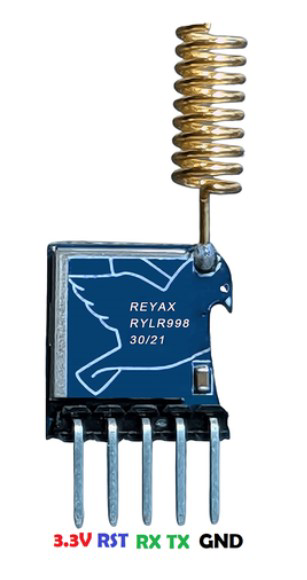
 Design with RYLR998 in Cirkit Designer
Design with RYLR998 in Cirkit DesignerIntroduction
The RYLR998 is a high-performance LoRa wireless transceiver module designed by Rayax. It operates in the global ISM frequency bands, providing long-range communication capabilities with low power consumption. This makes it an ideal choice for Internet of Things (IoT) applications, remote sensor networks, home automation, and other applications where wireless communication over long distances is required.
Explore Projects Built with RYLR998
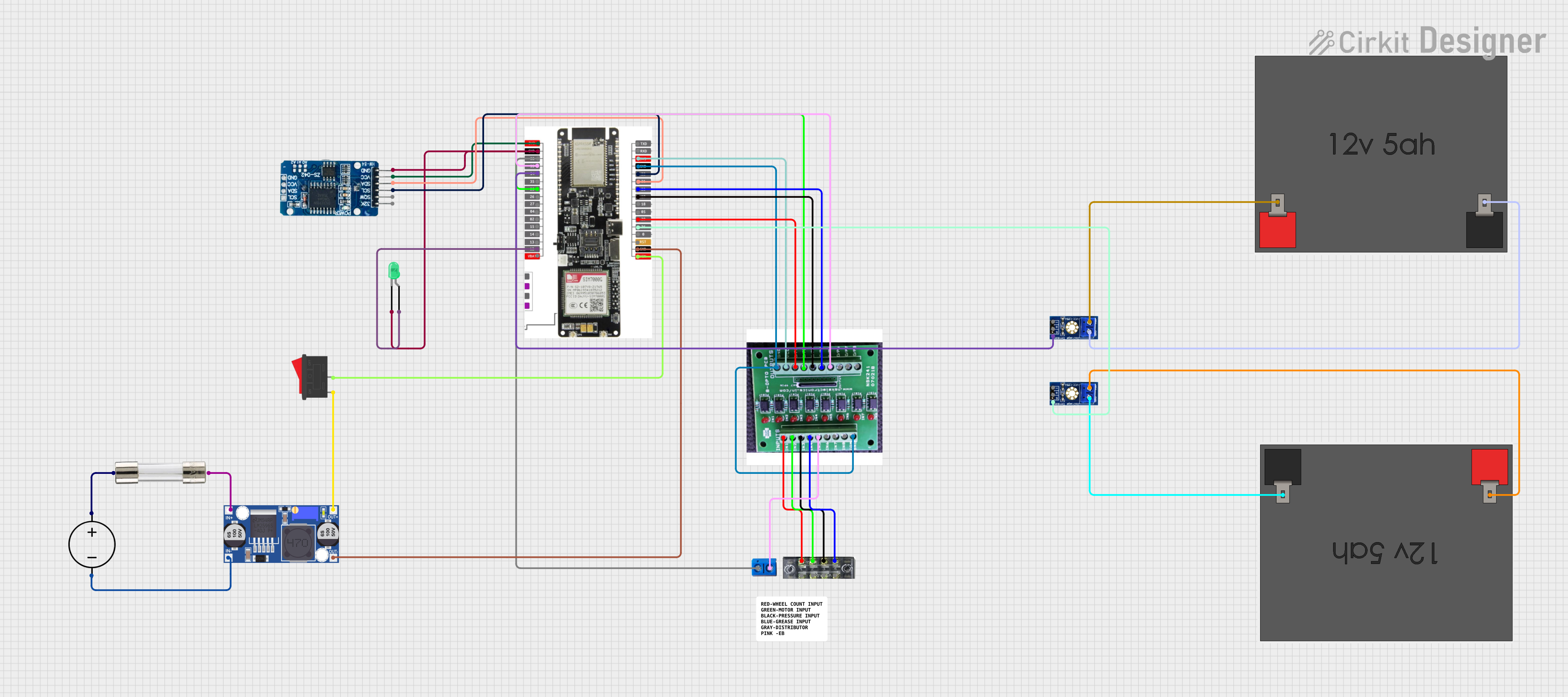
 Open Project in Cirkit Designer
Open Project in Cirkit Designer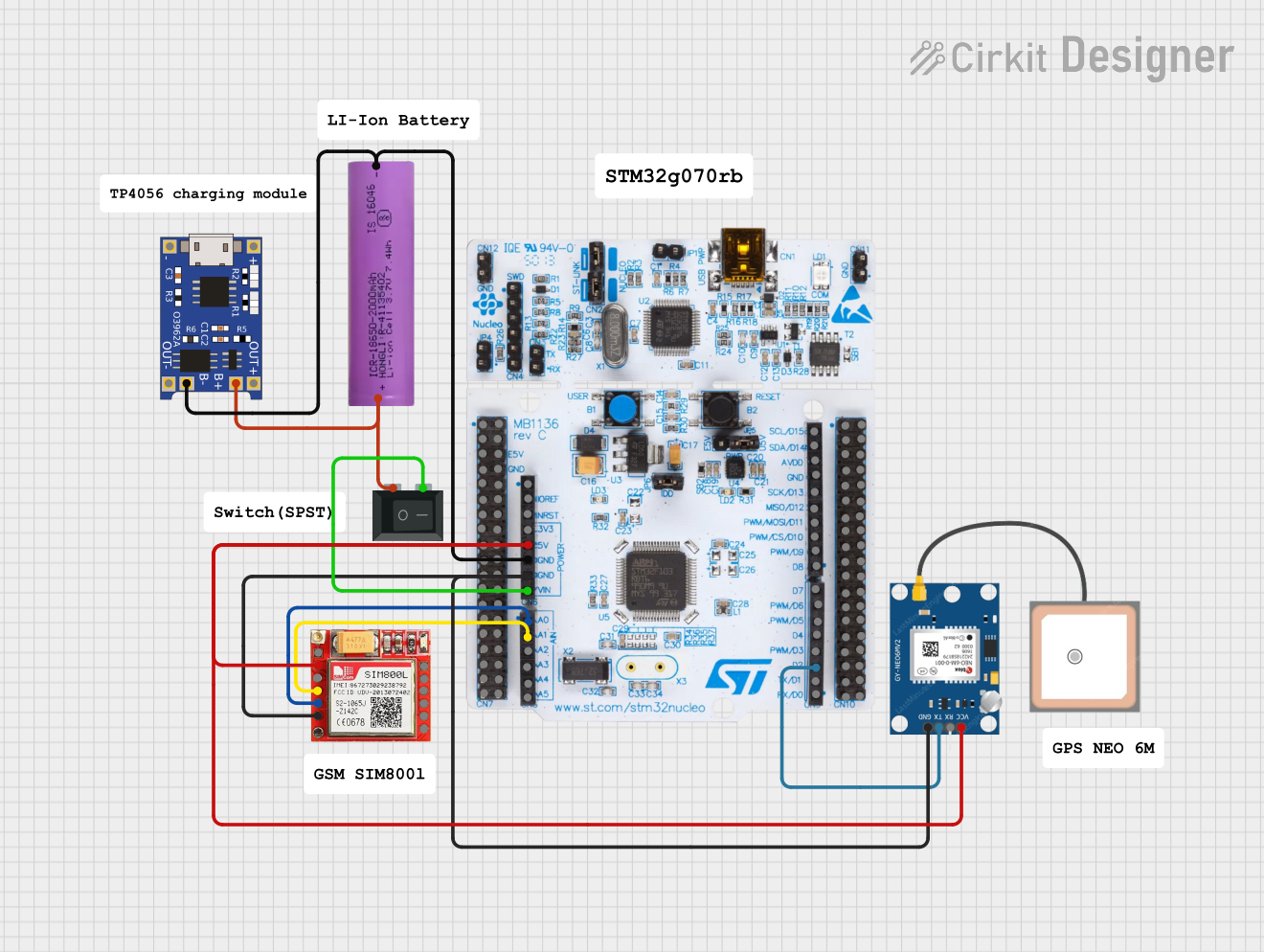
 Open Project in Cirkit Designer
Open Project in Cirkit Designer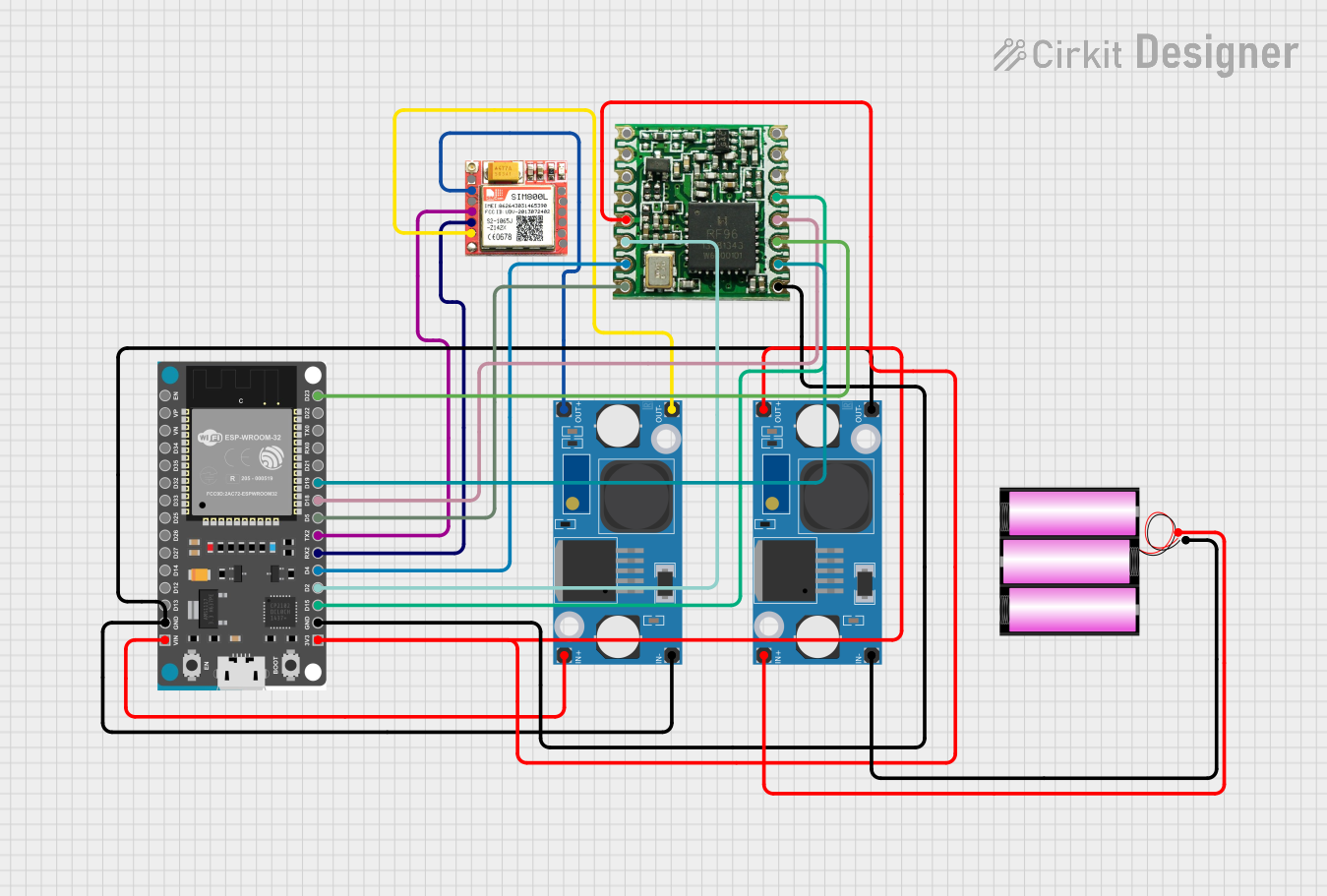
 Open Project in Cirkit Designer
Open Project in Cirkit Designer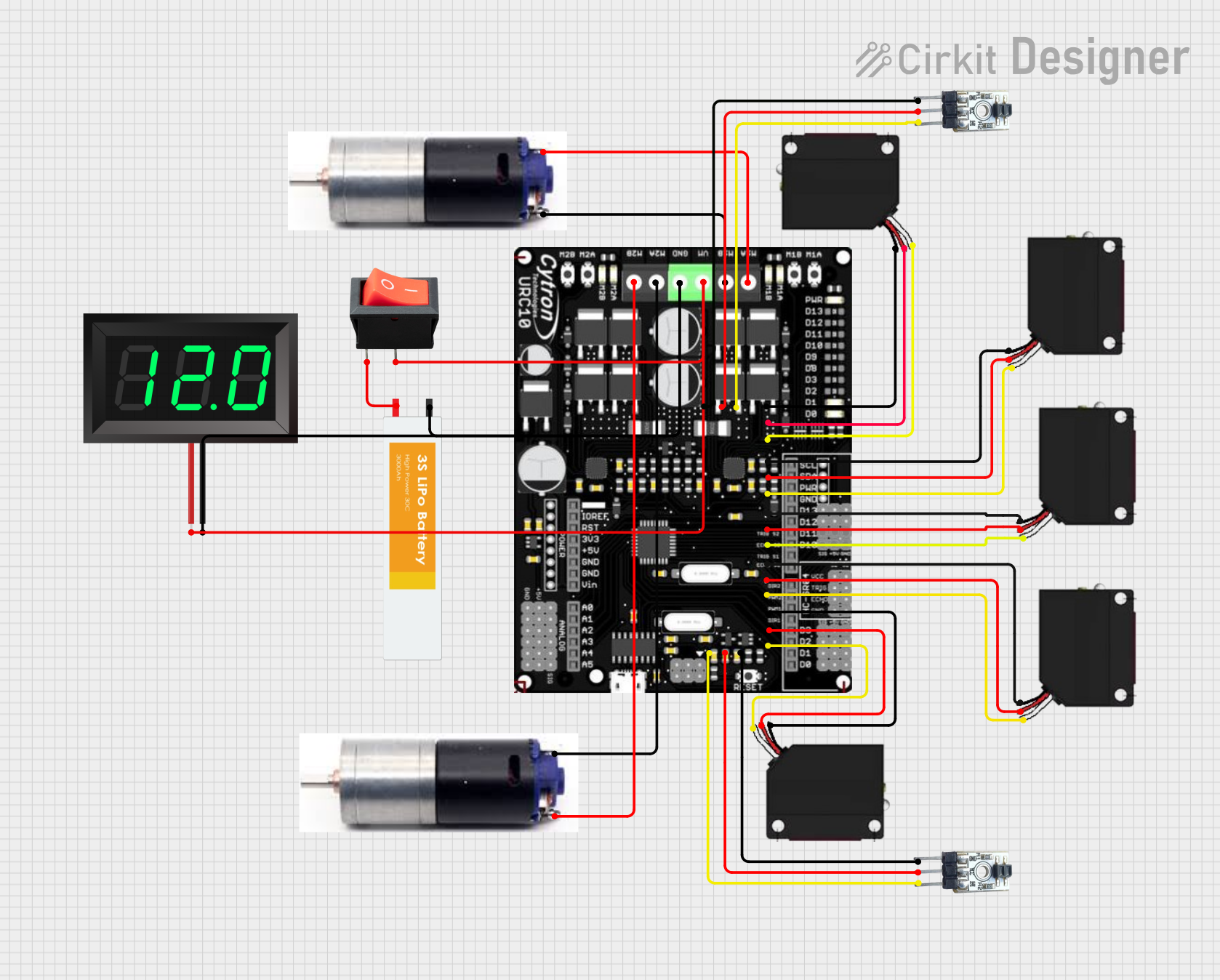
 Open Project in Cirkit Designer
Open Project in Cirkit DesignerExplore Projects Built with RYLR998

 Open Project in Cirkit Designer
Open Project in Cirkit Designer
 Open Project in Cirkit Designer
Open Project in Cirkit Designer
 Open Project in Cirkit Designer
Open Project in Cirkit Designer
 Open Project in Cirkit Designer
Open Project in Cirkit DesignerTechnical Specifications
Key Technical Details
- Frequency Range: 850 MHz to 930 MHz (varies by region)
- Modulation Techniques: LoRa spread spectrum, FSK, GFSK, and OOK
- Output Power: Up to +22 dBm
- Sensitivity: Down to -148 dBm
- Supply Voltage: 2.8V to 3.7V
- Operating Temperature Range: -40°C to +85°C
- Communication Interface: UART
- Data Rate: 0.3 kbps to 37.5 kbps (LoRa), 1.2 kbps to 300 kbps (FSK)
Pin Configuration and Descriptions
| Pin Number | Name | Description |
|---|---|---|
| 1 | GND | Ground connection |
| 2 | TX | UART transmit |
| 3 | RX | UART receive |
| 4 | VCC | Power supply (2.8V to 3.7V) |
| 5 | RESET | Reset pin (active low) |
| 6 | GPIO0 | General-purpose input/output |
| 7 | GPIO1 | General-purpose input/output |
| 8 | GPIO2 | General-purpose input/output |
Usage Instructions
Integrating RYLR998 into a Circuit
- Power Supply: Connect the VCC pin to a stable power source within the specified voltage range and GND to the ground.
- UART Communication: Connect the TX and RX pins to the corresponding RX and TX pins of your microcontroller or UART interface.
- Antenna: Attach an appropriate antenna to the antenna connector for optimal range and performance.
- Reset: The RESET pin can be connected to a microcontroller pin for software reset functionality.
Important Considerations and Best Practices
- Ensure that the power supply is clean and within the specified voltage range to avoid damaging the module.
- Use a proper impedance-matched antenna for the frequency band of operation.
- When designing the PCB, keep the antenna area free from metal components to avoid interference.
- For reliable communication, maintain a clear line of sight between the transceiver modules where possible.
- Follow local regulations regarding the use of radio frequencies and transmission power.
Troubleshooting and FAQs
Common Issues
- No Communication: Verify that the antenna is properly connected and the module is powered correctly. Check the UART connections and ensure the baud rate matches the configuration.
- Short Range: Ensure there are no obstructions between modules and that the antenna is suitable for the frequency band.
- Intermittent Communication: Check for sources of interference and consider changing the frequency or spreading factor.
Solutions and Tips
- Power Issues: Use a multimeter to check the voltage at the VCC pin.
- Signal Strength: Use the AT command
AT+RSSI?to check the received signal strength indication. - Firmware Updates: Keep the module firmware updated to the latest version for optimal performance.
FAQs
Q: Can the RYLR998 be used with an Arduino UNO?
- A: Yes, it can be connected via the UART interface using the TX and RX pins.
Q: What is the maximum range of the RYLR998?
- A: The range can vary greatly depending on the environment, but it can reach several kilometers in open areas with clear line of sight.
Q: How can I configure the module?
- A: The module can be configured using AT commands sent through the UART interface.
Example Arduino UNO Code
#include <SoftwareSerial.h>
// RX and TX pins connected to the Arduino
const int RXPin = 10;
const int TXPin = 11;
// Set up a new SoftwareSerial port
SoftwareSerial loraSerial(RXPin, TXPin);
void setup() {
// Start the hardware serial port
Serial.begin(9600);
// Start the software serial port
loraSerial.begin(9600);
// Send a configuration command to the RYLR998
loraSerial.println("AT+ADDRESS=1"); // Set device address to 1
}
void loop() {
// Check if data has been received from the RYLR998
if (loraSerial.available()) {
String received = loraSerial.readString();
Serial.print("Received: ");
Serial.println(received);
}
// Check if data has been received from the serial monitor
if (Serial.available()) {
String toSend = Serial.readString();
loraSerial.print(toSend); // Send the data to the RYLR998
}
}
Note: This example uses SoftwareSerial to communicate with the RYLR998. Ensure that the baud rate matches the configuration of the module. The example shows how to send a simple AT command to set the device address and how to send and receive data.